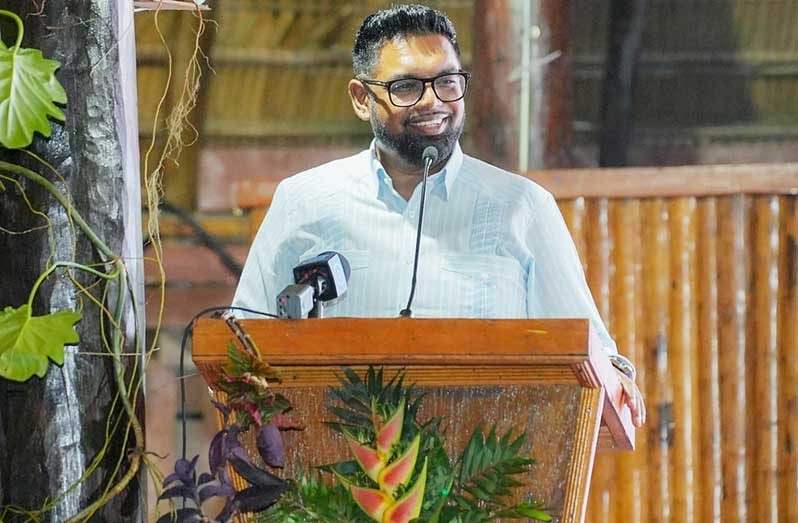–plans being explored to convert and utilise surface water, other sources for residential purposes, President Ali announces
WATER wastage is increasingly becoming a challenge and to ensure the availability of safe and sufficient water supply, the Government of Guyana has revealed plans to convert its fresh, surface water for residential use.
During a recent address at an event, President, Dr Irfaan Ali said that the initiative will see Guyana reducing water wastage.
“We are also now looking at how we can convert our surface water, the rich, fresh water and don’t dump that water, but have that water for our water sustainability and residential use for drinking purposes and so,” he said.
The government will be examining existing water conservancies to see how best the water in those can be converted for residential uses.
The Head of State related: “At the Hope Canal, instead of dumping the water, we’re creating three other hope-like canals and then we are looking at Diamond also where we have dumping of fresh water.”
This is part of efforts in keeping with the United Nations Sustainable Development Goal Six: to ensure availability and sustainable management of water and sanitation for all; 2.4 billion people live in water-stressed countries.
Most recent data revealed that 2.2 billion people lacked safely-managed drinking water, while 703 million lacked basic water service in 2022. Two billion people had no basic hand- washing facilities, whereas 3.5 billion people lacked safely-managed sanitation.
It is noted that water availability is becoming an environmental issue in many places, with droughts becoming more common.
Globally, water scarcity and droughts have become a threat to sustainable development and biodiversity.

In Guyana, some $26 billion has been set aside by the government to construct massive canals across the country.
This is to strengthen Guyana’s drainage and irrigation capacity, as well as respond to the adverse effects of climate change.
The Hope-like canals will be built in Regions Three, Five and Six. In Region Three, it is expected that the drainage and irrigation structures will target some 28,000 acres of land; in Region Five, 214,000 acres, while in Region Six 188,000 acres of land will see better water management.
The Hope Canal, which has Guyana’s largest sluice, aids in directing excess water towards the Atlantic Ocean. The massive drainage and irrigation infrastructure located in Region Four was commissioned back in 2014, and has eight doors that function as a drainage sluice.
At a recent news conference, Vice-President Dr. Bharrat Jagdeo, had said the funding for the new projects, will come from the country’s sale of carbon credits to the American oil firm, Hess Corporation.
This, he highlighted, is in keeping with the country’s Low Carbon Development Strategy (LCDS), as 85 per cent of the country’s carbon-credits proceeds are intended for climate- adaptation projects.
Aside from this, Dr Jagdeo also disclosed that $47 million would be expended to facilitate rehabilitation works at over 60 sluices across the country. Simultaneously, the government is also building out the capacity of pumping stations.
“The 19 pumping stations will have 37 pumps installed… the number of beneficiaries, once they [pumping stations] are completed, will be over 140,000 persons who will benefit from improved services in their communities, both drainage and irrigation of a domestic nature and also for agriculture areas,” he said.
Dr Jagdeo related that by adding these 37 pumps to the country’s drainage and irrigation system, 5,260 cubic feet per second pumping capacity will come on stream.
“That is a massive amount of water that you can get rid of if you have floods,” he said.
Another 2,480 cubic feet per second pumping capacity will be added to the system as the government also intends to purchase 40 new mobile pumps.
“If you add all of this in the five years, we will be budgeting around $155 billion to improve drainage and irrigation structures and to make our economies more resilient to flooding because of climate change and to improve our capacity to address water management,” Dr Jagdeo had said.



.jpg)








